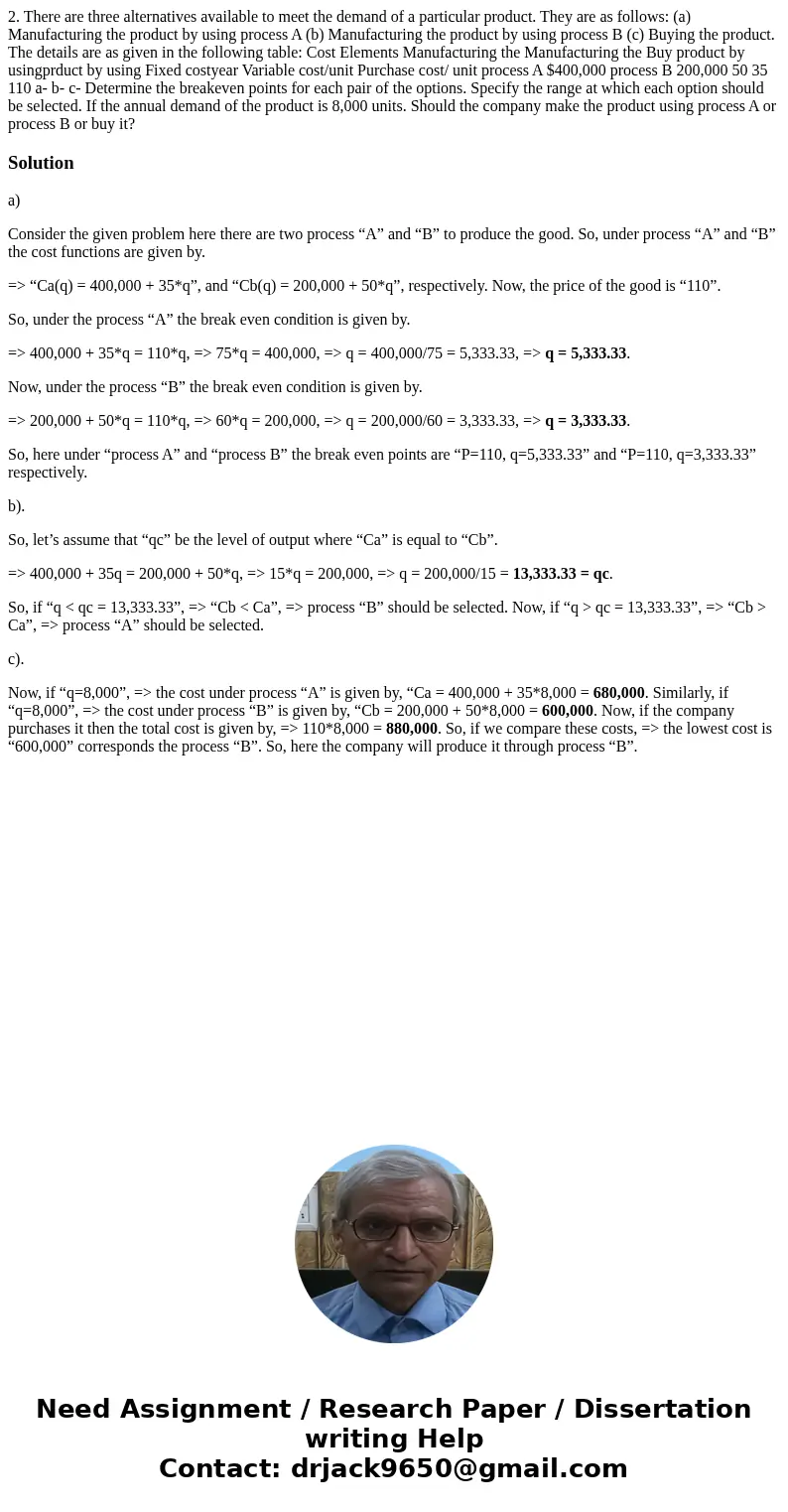2 There are three alternatives available to meet the demand
Solution
a)
Consider the given problem here there are two process “A” and “B” to produce the good. So, under process “A” and “B” the cost functions are given by.
=> “Ca(q) = 400,000 + 35*q”, and “Cb(q) = 200,000 + 50*q”, respectively. Now, the price of the good is “110”.
So, under the process “A” the break even condition is given by.
=> 400,000 + 35*q = 110*q, => 75*q = 400,000, => q = 400,000/75 = 5,333.33, => q = 5,333.33.
Now, under the process “B” the break even condition is given by.
=> 200,000 + 50*q = 110*q, => 60*q = 200,000, => q = 200,000/60 = 3,333.33, => q = 3,333.33.
So, here under “process A” and “process B” the break even points are “P=110, q=5,333.33” and “P=110, q=3,333.33” respectively.
b).
So, let’s assume that “qc” be the level of output where “Ca” is equal to “Cb”.
=> 400,000 + 35q = 200,000 + 50*q, => 15*q = 200,000, => q = 200,000/15 = 13,333.33 = qc.
So, if “q < qc = 13,333.33”, => “Cb < Ca”, => process “B” should be selected. Now, if “q > qc = 13,333.33”, => “Cb > Ca”, => process “A” should be selected.
c).
Now, if “q=8,000”, => the cost under process “A” is given by, “Ca = 400,000 + 35*8,000 = 680,000. Similarly, if “q=8,000”, => the cost under process “B” is given by, “Cb = 200,000 + 50*8,000 = 600,000. Now, if the company purchases it then the total cost is given by, => 110*8,000 = 880,000. So, if we compare these costs, => the lowest cost is “600,000” corresponds the process “B”. So, here the company will produce it through process “B”.

 Homework Sourse
Homework Sourse